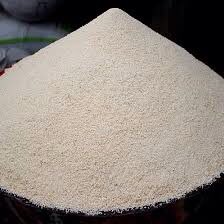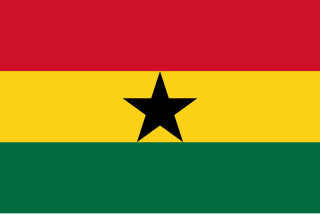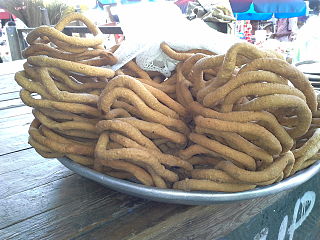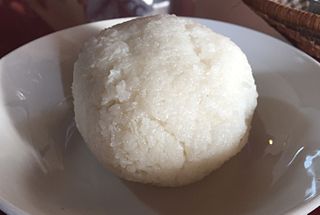Gallery
- Dan wake made from bean
- Dan wake with groundnut oil and pepper
- Dan wake with palm oil and pepper
- Fanke made from wheat flour
- Tuwo and taushe soup
- Jullof rice and beans
- Alale
- Kosai
- Kosai
Hausa cuisine is traditional and modern food prepared by Hausa people. It is based on the availability of raw food materials they can farm or provide from other places. Most times Hausa people depend purely on the farm products they have cultivated for food preparations. [1] Hausa people have a meal that is common to most Zongo communities called Tuo Zaafi.
Hausa people take breakfast very seriously. They take light liquid foods for breakfast. These foods are usually prepared at home, but some Hausa people buy commercial food from either food houses or street food sellers. Most Hausa take the following foods as breakfast:
Sobo: a natural drink made from a dry zobo flower (roselle plant)
Hausa cuisine features a variety of snacks and desserts, including kuli-kuli, a deep-fried snack made from ground peanuts and spices, and masa, a type of rice cake that is typically served with a spicy sauce. Other popular desserts include kunun gyada, a sweetened peanut milk, and dakuwa, a sweet snack made from crushed peanuts and sugar.
Hausa cuisine is also known for its soups and stews, which are typically made with a combination of vegetables, meat, and spices. Miyan kuka, a soup made from baobab leaves, is a popular dish in northern Nigeria. Miyan taushe, a soup made from pumpkin, is also a favorite.

Porridge is a food made by heating or boiling ground, crushed or chopped starchy plants, typically grain, in milk or water. It is often cooked or served with added flavourings such as sugar, honey, fruit, or syrup to make a sweet cereal, or it can be mixed with spices, meat, or vegetables to make a savoury dish. It is usually served hot in a bowl, depending on its consistency. Oat porridge, or oatmeal, is one of the most common types of porridge. Gruel is a thinner version of porridge and congee is a savoury variation of porridge of Asian origin.

Ugali, also known as posho, nsima, papa, pap, sadza, isitshwala, akume, amawe, ewokple, akple, and other names, is a type of corn meal made from maize or corn flour in several African countries: Kenya, Uganda, Tanzania, Zimbabwe, Zambia, Lesotho, Eswatini, Angola, Mozambique, Namibia, Democratic Republic of the Congo, Malawi, Botswana and South Africa, and in West Africa by the Ewes of Togo, Ghana, Benin, Nigeria and Cote D'Ivoire. It is cooked in boiling water or milk until it reaches a stiff or firm dough-like consistency. In 2017, the dish was added to the UNESCO Representative List of the Intangible Cultural Heritage of Humanity, one of a few foods in the list.

In West Africa, garri is the flour of the fresh starchy cassava root.

Ugandan cuisine consists of traditional and modern cooking styles, practices, foods and dishes in Uganda, with English, Arab, and Asian influences.

Ghanaian cuisine refers to the meals of the Ghanaian people. The main dishes of Ghana are centered around starchy staple foods, accompanied by either a sauce or soup as well as a source of protein. The primary ingredients for the vast majority of soups and stews are tomatoes, hot peppers, and onions. As a result of these main ingredients, most Ghanaian jollof rice, soups, and stews appear red or orange.

Akara is a type of fritter made from cowpeas or beans by the Yoruba people of Nigeria, Benin and Togo. It is found throughout West African, Caribbean, and Brazilian cuisines. The dish is traditionally encountered in Brazil's northeastern state of Bahia, especially in the city of Salvador. Acarajé serves as both a religious offering to the gods in the Candomblé religion and as street food. The dish was brought by enslaved Yoruba citizens from West Africa, and can still be found in various forms in Nigeria, Benin and Togo.

Kunu is a popular drink consumed throughout Nigeria, mostly in the North. It is usually made from a grain such as millet or sorghum, although it can be made from maize as well. As a grain based beverage Kunu is a member of the Horchata family. The variety of the drink made from sorghum is a milky light-brown colour, whilst that which is made from millet and maize is whitish in colour.

West African cuisine encompasses a diverse range of foods that are split between its 16 countries. In West Africa, many families grow and raise their own food, and within each there is a division of labor. Indigenous foods consist of a number of plant species and animals, and are important to those whose lifestyle depends on farming and hunting.

Nigerian cuisine consists of dishes or food items from the hundreds of Native African ethnic groups that comprises Nigeria. Like other West African cuisines, it uses spices and herbs with palm oil or groundnut oil to create deeply flavored sauces and soups.

Kuli-kuli is a West African snack primarily made from peanuts, first made by the Nupe people of Nigeria. It is a popular snack in Nigeria, Benin, northern Cameroon and Ghana. Today kuli-kuli is accepted across the globe. It is often eaten alone or with a mixture of garri also known as cassava flakes, sugar and water, popularly called "garri soakings". It is also eaten with Hausa koko, fura, and akamu, and is sometimes ground and put into salad. It is often ground and used as an ingredient for suya and kilishi.

Puff-puff is a traditional snack made of fried dough and eaten across Africa, especially in the west of the continent. The name "puff-puff" is from Nigeria, but many other names and varieties of the pastry exist.

Central African cuisine includes the cuisines, cooking traditions, practices, ingredients and foods of the Central African Republic (CAR). Indigenous agriculture in the country includes millet, sorghum, banana, yam, okra, yellow onion, garlic, spinach, rice and palm oil. Imported crops of American origin include maize, manioc (cassava), peanuts, chili peppers, sweet potato and tomato. Additional foods include onions, garlic, chiles and peanuts.

Omo tuo is a Ghanaian staple food made with rice. Mostly, "broken rice" or long grain rice broken into smaller pieces is used. It is a Ghanaian version of the Nigerian Hausa staple Tuwon Shinkafa, which provides the name “Tuwo” used in this dish and in “Tuwo Zaafi”, another popular Ghanaian dish with Hausa origins. The rice is usually cooked with more water than usual to make it softer. It is then beaten to make it smooth, after which it is shaped into sizable balls. In Ghana, it is usually served with soup made of groundnut or palmnut. In Nigeria, it may accompany miyan kuka.
Tuwon masara is a Nigerian corn flour swallow eaten primarily by the Hausa and Fulani that resembles fufu. It has several alternative names. This meal is not only common in the northern parts of Nigeria, it is well known around the world, it is just cooked in different ways depending on the country.

Tuwon Shinkafa is a type of Nigerian and Nigerien rice swallow from Niger and the northern part of Nigeria. It is a thick pudding prepared from a local rice that is soft and sticky, and is usually served with different types of soups like Miyar Kuka, Miyar Kubewa, and Miyar Taushe. Two variants made from maize and sorghum flour are called Tuwon Masara and Tuwon Dawa, respectively. In Ghana, Tuwon Shinkafa is called Omo Tuo.

Miyar Kuka or Miyan Kuka, also known as Luru soup, is a type of soup popular among West Africa’s Sahelian ethnic groups. The soup is made from powdered baobab leaves. It is usually served with Tuwo or Fufu. A seasonal variant of this soup is made using fresh mashed baobab leaves. This variant is only available during the rainy season when fresh baobab leaves are available.

Koko is a spicy millet porridge. It is a popular Nigerian and Ghanaian street food and commonly consumed as a breakfast meal. It can also be taken in late afternoon as snack. Koko is made from many grains including millet with a few local spices added to give it a particular taste and color. It is called Hausa koko in areas where it was introduced by Hausa-speaking people. In northern Ghana, the term 'Hausa koko' is not used. Instead, porridge made from millet is called 'za koko' in Dagbanli. Several types of porridge are made from corn, millet, and sorghum. Other types of porridge include koko talli/salli, zimbuli, among others. It is also common in the various communities in both countries.
Miyar Zogale is an Hausa dish also known as morning soup. It is made with moringa leaf as the main ingredient, others include groundnut paste, grounded tomato, beef, cubes, daddawa and palm oil.
Gurasa is a local bread originating from the Northern part of Nigeria, specifically Kano state. It is similar to bread except the dough is lighter. This local Northern bread is eaten for breakfast, lunch, or as a snack.

Yoruba cuisine is the numerous and diverse foods of the Yoruba people of Yorubaland. Some notable Yoruba food include; Ọ̀fadà, Àsáró, Mọ́í Mọ́í, Ẹ̀gúsí soup, Àbùlà, Àkàrà, Ilá Alásèpọ̀, Ẹ̀fọ́ rírò with Òkèlè, etc.